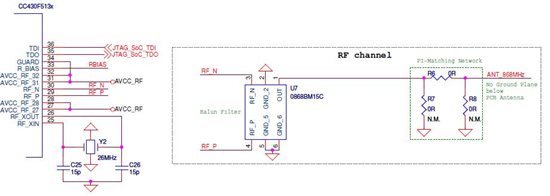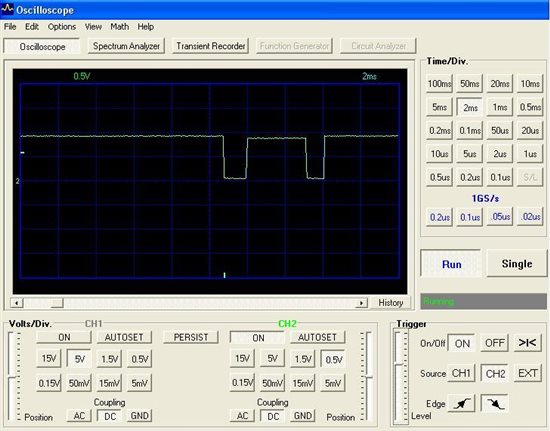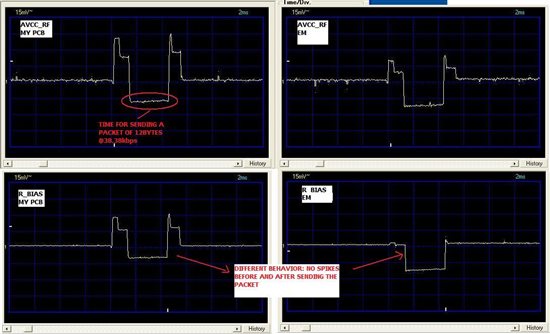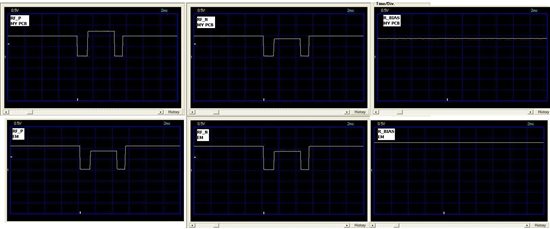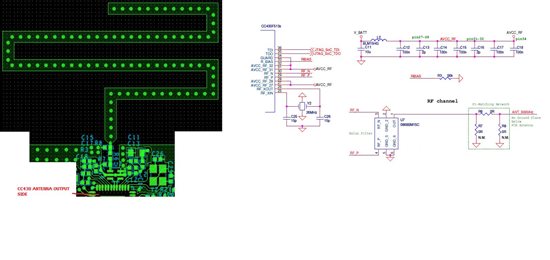Hello everybody!
I am working on the CC430F5137 SoC for a Wireless Sensor that I am developing for my Company (working frequency is 868MHz).
After having prototyped (successfully) all hardware and Firmware using the EM430F5137RF900, I designed my PCBs.
The same Firmware which correctly works on the EM430F5137RF900 Evaluation modules, does not work on my PCBs. Specifically, everything works but the Wireless communication.The sensors don't communicate between themeselves, neither with the EM430. I cold expect some slight variation in the working frequency due to the antenna mismatch, but I didn't expect that the radios didn't work at all.
For better understanding the problem here I describe my PCB design.
One of the main constraints for the PCB design was using a Low cost antenna, but with good performances, so I choosed the Monopole PCB antenna (single band 868MHz) presented in Design Note DN024.
I simply followed all hints suggested in the Design Note and, for a future fine tuning, I also added a pi matching network (by now is simply a 0Ohm resistance connecting the Balun to the Antenna).
Because I had some space occupancy constraints, I used the proposed JTI (Johanson Technology) Matched Balun Filter.
So my system is as follows: CC430 RFN/RFP pins - JTI Balun Filter - Pi Matching Network - PCB Monopole Antenna @868MHz.:
Regarding the 26MHz quartz I followed all rules explained in the data-sheet, selecting two 15pF capacitors which, together with the parasytic capacitance on the pin (around 2.5pF) gave a 10pF equivalent capacitance: (1/ ((1/C25)+(1/C26))) + Cparasytic = 10pF.
This capacitance value is ok for both the CC430 and my quartz, whose load capacitance is 10pF.
My question is: what's wrong with this PCBs??
Furthermore I made the following Experiment: I simply downloaded on the EM430 and on my PCBs a Firmware which simply continuously sends a SYNC word @868MHz, 38.38kbps (sending a Strobe(RF_STX) command).
Using the SMART RF STUDIO 7, configured in Continuous Rx mode I have the following result:
- Using both EM430 as sender and receiver: RSSI goes up as soon as I switch on the EM430 continuously transmitting SYNC word @ 868MHz
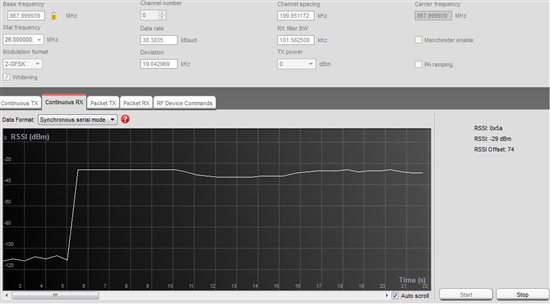
- Using my PCBs as sender and receiver: when I switch on my PCB for continuously transmitting SYNC word nothing changes in the RSSI which, strangely, is below the sensitivity level! How can this be possible?
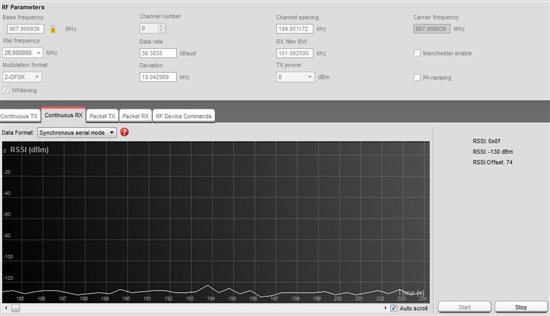
In addition to this, I did another test to better understand if my sensors are, at least, transmitting something:
Using my 50 MHz oscilloscope, which I know is not suited for such high frequency signals, but is enough at least to see the signal shape, I checked the voltage values on the RF_N and RF_P pins on both the EM430 and on my sensors when they transmit a 13Byte packet @868MHz, 38.38kbps.
Using both the EM430 and my sensors I have the same signal on the RF_N pin:
The signal goes down at each transmission, then stands up for the transmission time, then goes down and then up again. The ON time is exactly equal to the time spent for sending the 13 bytes (including Preamble and SYNC).
This seems to me to be good, because at least the output amplifier sends something.
The only difference between EM430 and my sensors is that the RF_P signal has exactly the same shape, but a slightly higher voltage value during the ON phase if compared to the RF_N signal. This does not happen on the EM430 where the signal is exactly the same.
After all this explanation, does anybody have any idea on what's happening to my PCBs?
As I said, I could expect some slight frequency variation compared to the EM430, but not that big! And why the sensors cannot even communicate with each other?
Thanks in advance for your kind help!
Regards,
Claudio


